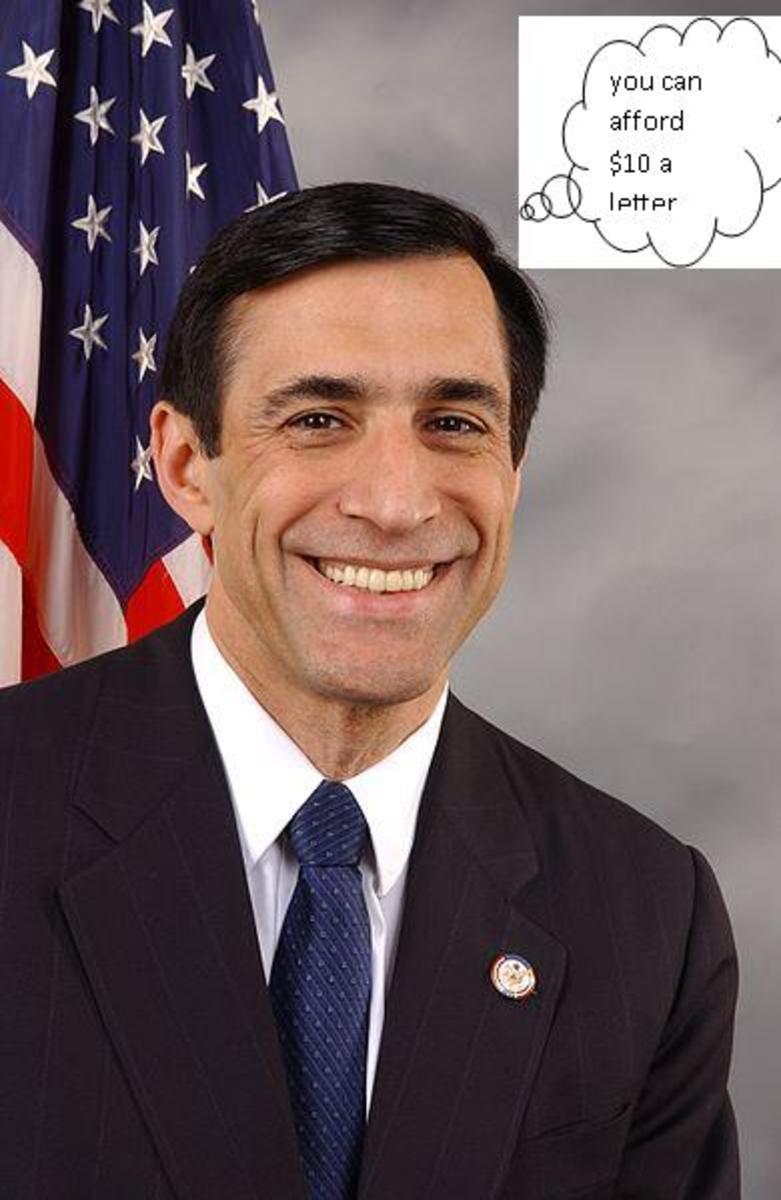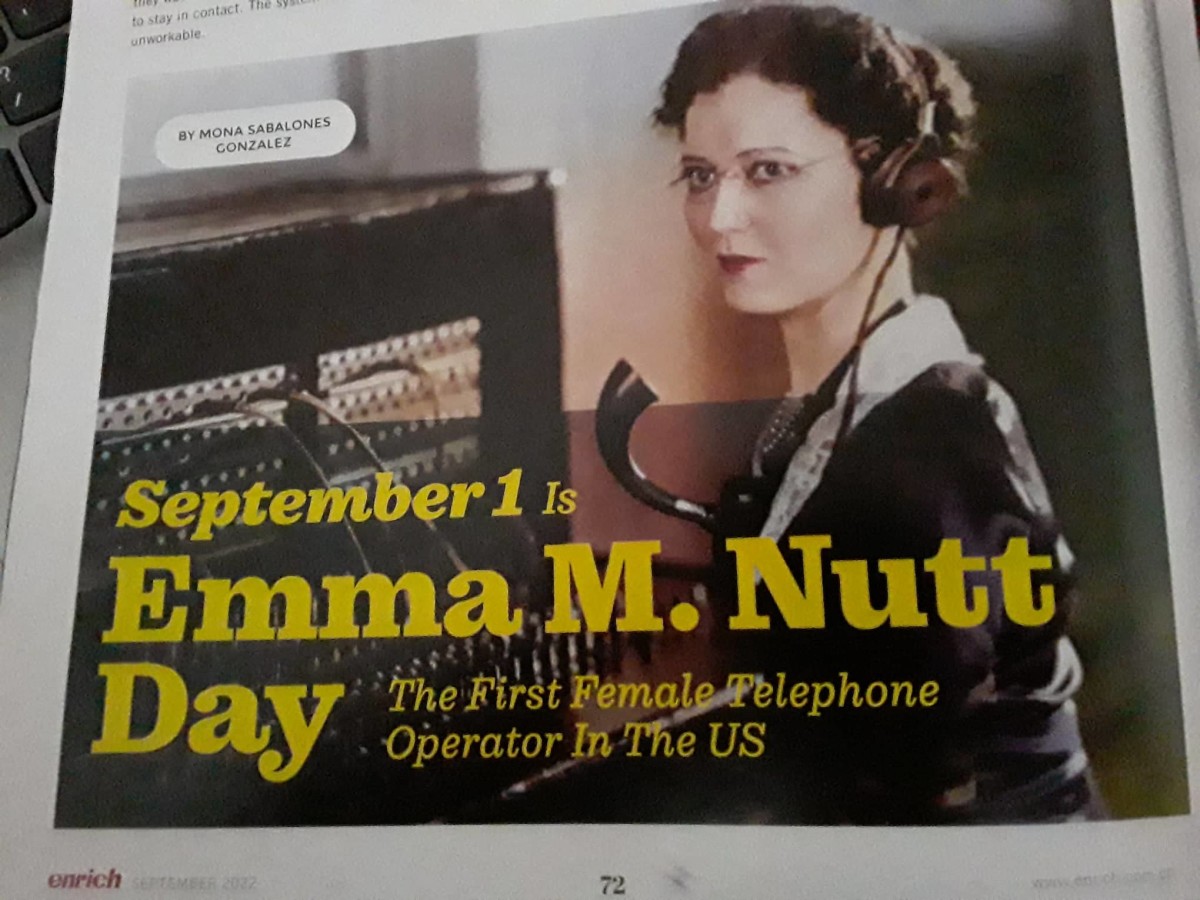Bevins Tales - BT17 - 1896 Howard and Myrtle Watched as Telephone Service Arrived in Oak Springs
They Brought the Telephone Switchboard to Oak Springs
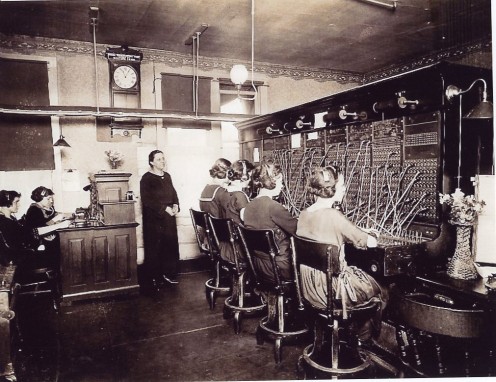
The Nagle Brothers Brought Telephone Service to Oak Springs
In February, Darrell Nagle bought Lot 1 of Block H, diagonal from the southeast corner of Centennial Square. He announced that the building being built there would house two businesses. His photography business would occupy a store front facing off the corner of the building toward Centennial Square. The second business, in partnership with his younger brother, Dwight, would be Nagle Telephone Company. It would occupy the rest of the building, with room for expected growth over the coming years.
Dwight Nagle had been affiliated with the Bell Telephone Company in St. Louis since it began in 1889. At first he was an employee, learning all of the new techniques of the business from the ground up. More recently, he had been an independent contractor with the Company, primarily switching out independent switchboard exchanges in the St. Louis area as they were taken over by the Bell Telephone Company. Recently, Dwight found himself in a position to purchase a full set of switchboard exchange equipment he considered to be in excellent condition. At that point, Dwight and Darrell entered into their partnership agreement to build and operate a telephone service in Oak Springs. Behind the scenes, they had been working with the Town Council for several months to do this.
Dwight and his wife, Sarah, they had no children, moved to Oak Springs and would live with Darrell and Marie in the house at Lot 1 of Block EE. Sarah had worked extensively as a switchboard operator and as supervisor of operators in recent years. She would be training Darrell and Marie’s daughter, Donna, who was a Senior at the High School, to be one operator of the switchboard. Hannah (Mason) Nagle, Gerald’s wife, would be trained as a second operator. Darrell and Marie’s son, Johnson Nagle, would be marrying Janice Lay in June. Janice would be trained as the third operator. Johnson Nagle would be involved directly with Dwight being trained in setup, maintenance, and operation of the switchboard and lines to extend service to the business community and residences in the coming months and years. This crew would get the business off the ground during 1896. Additional employees were expected to be hired, as needed, as the subscription service grew and expanded across the community, and eventually into the surrounding rural areas.
Weddings were in the air in 1897
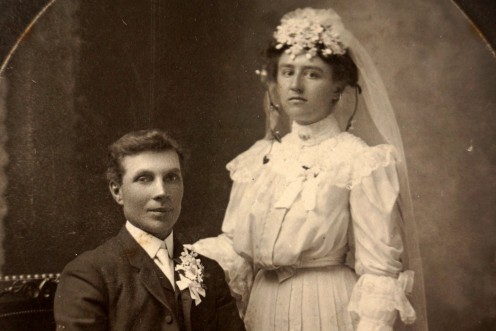
Local Telephone Service Arrived in the Summer
The pending arrival of local telephone service set the entire community alive with anticipation. It was the talk of the town. Howard and Myrtle knew it would likely be a few years before they had telephone service on their farm, but they were excited along with everyone else. Folks regularly watched as the building went up off of Centennial Square. People shared with each other the tidbits of information they had from friends and relatives in larger communities that already had telephone service. How would it change their lives? When would they be connected to the outside world? Would they? Would the business be financially viable? Could the Nagle family pull this off?
By the time Donna Nagle graduated from High School in May with her 8 classmates, the first switchboard was being installed, so she went right into training as an operator. As planned, Johnson Nagle and Janice Lay were married in June, barely taking time off from his ‘apprenticeship’ and her training as an operator. Gerald and Johnson Nagle, brothers, bought and built a house on Lot 3 of the new Block GG (the former Levi Weston pasture). The two young married couples would share this house. Josephine Nagle had been born to Gerald and Hannah in the fall of 1895, so Hannah and Janice would be able to conveniently share babysitting duties as each trained and worked as operators, less than a block away. The business office of the telephone company was installed along side the Nagle Photography Studio, facing onto Third Street, easily accessible from Centennial Square, facing Gray Saddlery across street.
Later in June, it was announced that after seven years serving Oak Springs, Methodist Minister, Rev. Millard Long, and his wife, Frances, were being reassigned to the church in Rolla, Missouri. Their replacement would be Rev. Jason Alexander and his wife, Jennifer. For the first time, there would be children living in the parsonage, son, Jay, 8, and daughter, Deborah, 4.
On Sunday morning, June 28, Rev. Alexander conducted his first worship service at the Methodist Church in Oak Springs. In the afternoon, he officiated at his first wedding, at the home of Dr. Ollie and Martha (Reeves) Seaman, when he married Nelson Reeves and his bride, the former Flora Polk. Nelson had recently completed his apprenticeship at the Olson Blacksmith Shop and would continue there in the first week of July as a full-fledged blacksmith as an employee.
The Young Blacksmith Married His Bride
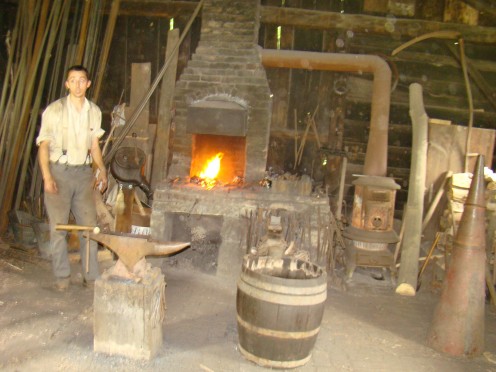
Other Changes Across the Oak Creek Valley
In the east valley, in July, Rev. Alexander officiated at his second wedding, at the Singer home, where Jack Singer was married to Gladys Rosa Pruitt, of the central valley north of Oak Springs. The young couple would live with his parents, Jonas and Mary Singer, as there were not other children at home.
In Oak Springs, a week later, Rev. Alexander married Michael Lay and Jolene Gray. They had each been working at the Diamond Restaurant with Ralph and Inez Cornelius. With their marriage, they entered into an agreement with owner Ivan Toll that they would take over management of the Restaurant on July 1, 1898, in two years, when Ralph and Inez would retire from their management responsibilities.
As the fall harvest was ending, it was learned that Jourdan Sullivan, and his wife, Martha, had purchased Lot 1 of Block FF, and were building a retirement home there. They were also in the process of selling their farm to neighbors Peter and his son, Michael Riley. Once the Sullivan’s had moved to town, Michael would marry Billy Joe Die and they would live at and farm the Sullivan place in cooperation with his father, Peter. Shortly thereafter, it was learned that Hiram Carver and his wife, Millie, had purchased the lot just east of the Sullivan’s and would move to town as soon as their house was ready. Finally, also in the west valley, it was learned that Donald Dent would marry Edith Garrett. Edith had gone off to college in the summer of 1987 but was now ready to return to farm life. They planned to marry over the year-end holidays, and would live with his parents, there being no other children left in the home.
Note by the author
This set of stories picked up in Oak Springs in 1882 when the Bevins family arrived in Oak Springs including young Howard Bevins, the 14-year-old about to become a High School Freshman. He was in the same class as Myrtle Truesdale. This is their story. After they married, they became a part of the larger community, of course.
The stories of the "American Centennial at the Homeplace: The Founding (1833-1875)" collection of historical fiction family saga short stories lay the background for the stories of Oak Springs and the Oak Creek Valley. They
have also been published on "The Homeplace Saga" blog (thehomeplaceseries dot blogspot dot com).
“The Homeplace Saga” historical fiction family saga stories are the creation of the author, William Leverne Smith, also known as “Dr. Bill.”

